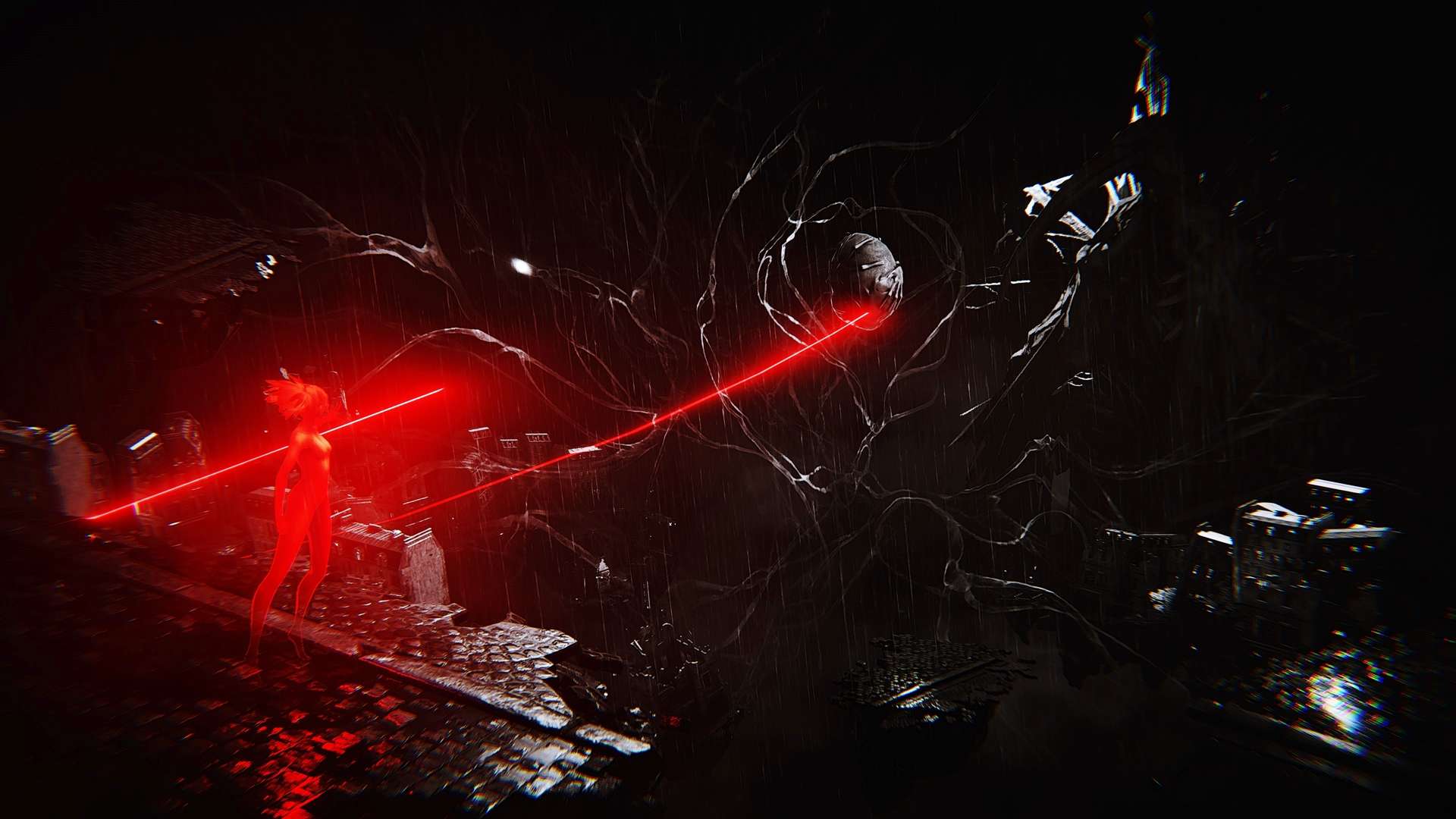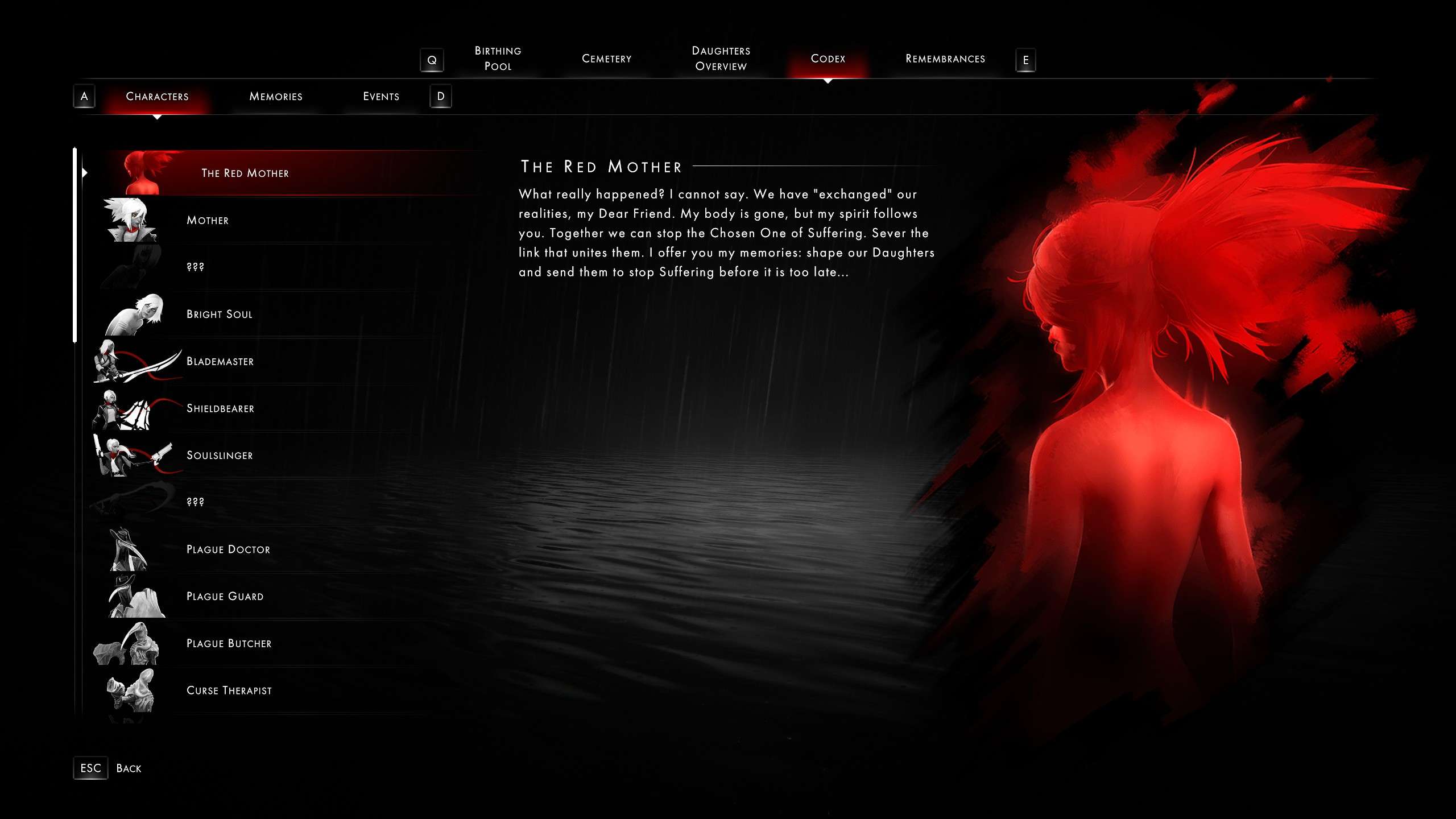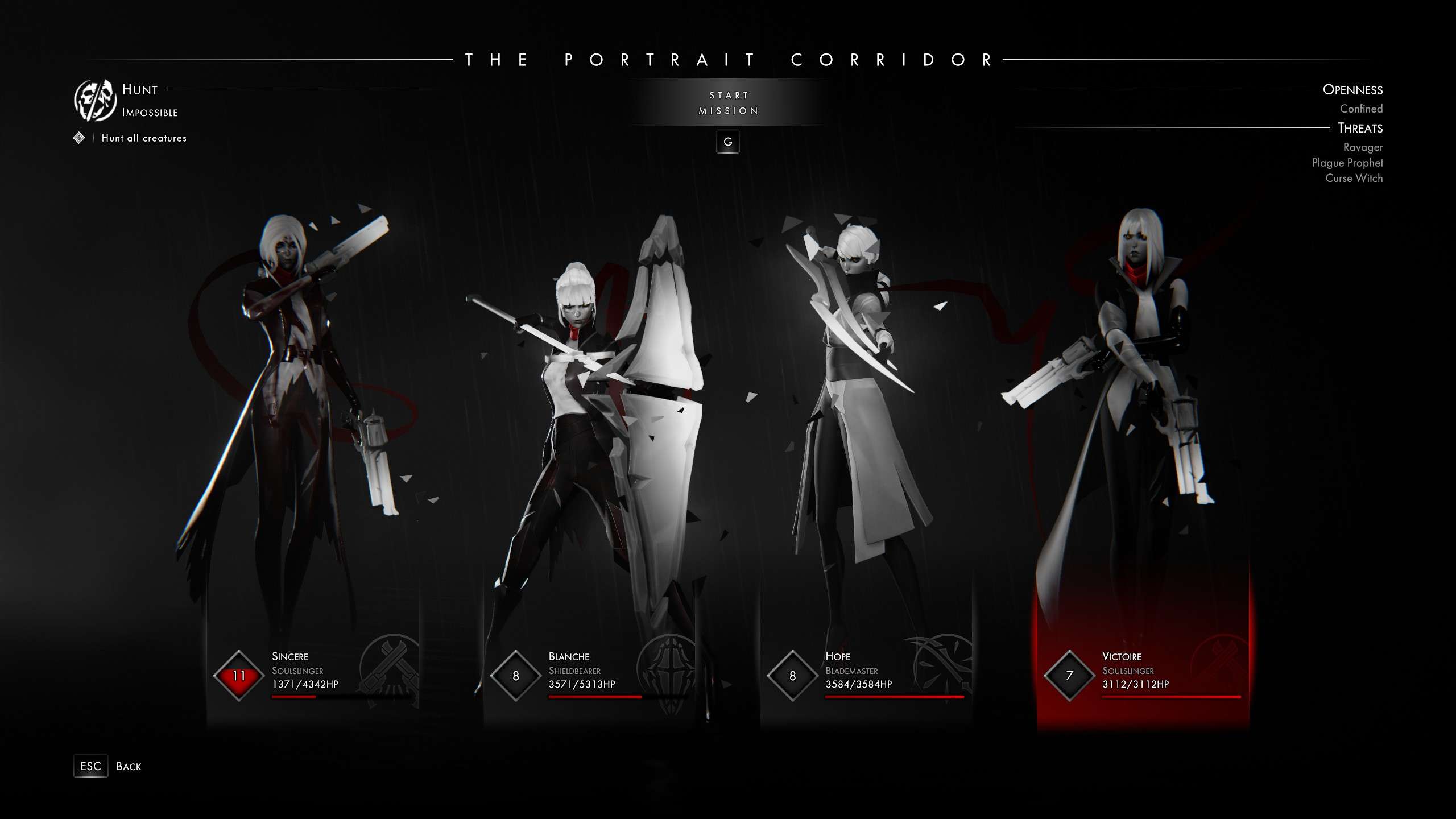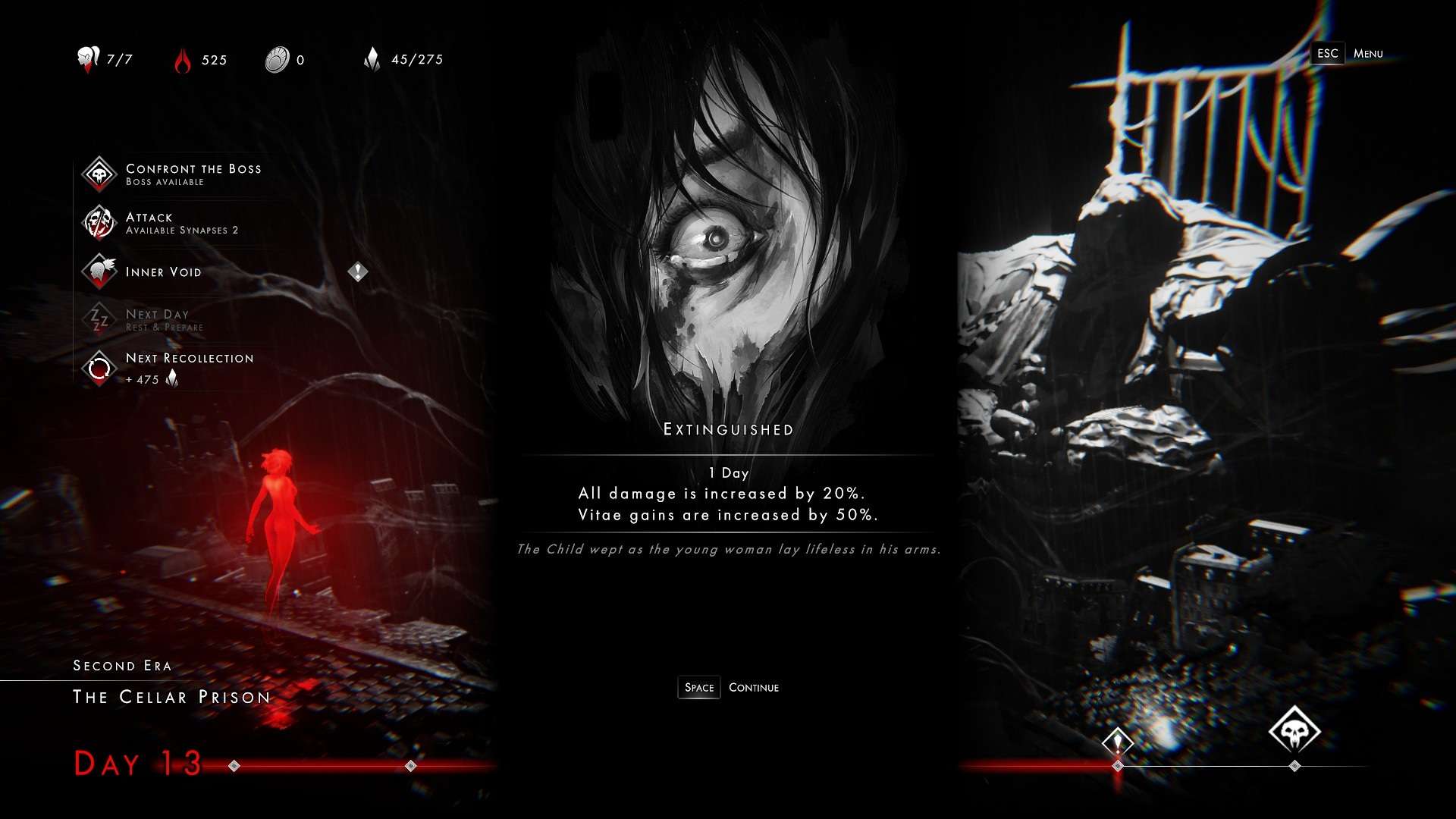
Othercide PC Review
I enjoy big budget video games as much as the next person, but lately more interesting titles are coming from smaller publishers, such as French based Focus Home Interactive. Over the last couple of years the company has managed to find developers who create intriguing titles, some have managed to make their way into my top 10 game of the year lists.
Last year they published the wonderful A Plague Tale: Innocence and the-more-Bioware-RPG-like than anything Bioware have put out in recent times, Greedfall. That was 2019, and while some people might still wish it was 2019 due to the current global Coronavirus pandemic, new things are still releasing to help take our mind away and give us a little hope that normality will eventually return. That segues nicely into Othercide, a game about not given up hope no matter how bleak things seem, and is a refreshing tactical RPG for the publisher courtesy of French developer Lightbulb Crew.

Othercide makes such a captivating first impression with its introduction to the lore and world that it is kind of a shame that it isn’t more easily fed to the player. In the beginning it is explained that an entity know as The Mother, who has protected the Veil, a sort of barrier that halts entities known as the Others from breaking into the Mother’s reality. She has prevented the Others from causing such harm for hundreds of years, but now has failed in protecting the Chosen One, “The Child”, who has succumb to the Suffering, one of the oldest Others who fed on the Child’s misery and pain to give him immortality. The Child has become so strong that he managed to defeat the Mother, while fracturing the Veil in the process, allowing the Suffering a step closer to breaking through into reality as an egg waiting to hatch. All is not lost, as The Mother’s red spirit lives on and is giving birth to daughters built from fragments of her memory to battle in her place and save the corrupted youngster.
That is about as straightforward as the storytelling will be, because apart from small snippets of dialogue in key points in the game, the rest of the Othercide‘s mysterious story, world and character building is done through the codex; snippets of cryptic dialogue and art that are unlocked throughout the game to deliver more knowledge and insight. While not identical to how Dark Souls‘ builds its world through indirect narrative, it feels more closer to that than the often simpler approach one might expect from a tactical RPG. Presenting its story like this meant I was always grasping for more, and as soon as I noticed a new codex unlock I wanted to get straight into it to find out more about this enthralling and grim setting that the people at Lightbulb Crew have birthed, even if sometimes it left me with more questions.

Pain, suffering, death and rebirth are all elements within Othercide‘s gameplay, and I have to commend Lightbulb Crew for somehow managing to incorporate those without feeling artificial. At its heart, this is a tactical RPG, so the hallmarks of the genre are here; grid-based movement, distinct roles, battle observation and planning, character position, and of course, the dreaded power of Lady Luck. On top of that foundation is the inclusion of rogue-lite design, adding a twist to death, where a game over or character permadeath is often the end result in a game like XCOM, in Othercide, it means restarting the campaign again, but with some form of progression carrying over into the next attempt.
Failure is built into its game design, which might be off-putting for the serious hardcore tactical RPG fans – you could get quite far if you are good enough. I heard people managed to get to the third boss (out of five) on their first go, but for me, I died on the first boss on my initial attempt. I personally do not feel this hurts the game, since these additional mechanics are smartly intertwined with the core idea of an tactical RPG, plus, there is a theoretical maximum gain before nothing else can be done and it is down to player skills. Death might not be as punishing as the genre is accustom to, but the game actively promotes players to learn and adapt as they progress through the game on each run, and to me, that is improving one’s tactics.

A Recollection is the game’s definition of a run – there is a counter at the top that counts the run total. A run begins with the Red Mother germinating three level one daughters fitting into one of three classes – Blademaster (sword) , Shieldbearer (shield and spear) and Soulslinger (dual pistols). A fourth class, the Scythedancer, becomes available after meeting the third boss. These typically fall into defined roles. The Blademaster excels at dealing damage with their huge sword, a Shieldbearer comes with the most defence and health, long range is with the Soulslinger and area of effect and armour breaking is the Scythedancer’s speciality. Taking one of each class into battle seems like the smartest idea, but the game allows you germinate more daughters, if you have enough vitae to do so, at any point during a run. This opens up for a combination of classes to send into battle, or favouritism, as my trio of Soulslingers proved beneficial during an experimental run.
The campaign is spread across five eras, with each era covering seven days. On the seventh day of the era the era’s boss will attack. At least one mission must be attempted before being able to progress to the next day. These missions grow from one or two, to four or five as the days roll closer to the boss, but the daughters can only participate in one mission before tiredness hits. It is always an option to have a backup squad to take on the extra missions and gain the resources, but not a requirement depending how one wants to play Othercide. Mission types come in three difficulty settings – challenging, hard, impossible and the most common are Hunt missions in the first era, the default type, which sets a squad of two, three or four daughters (based on mission limit) to defeat all the enemies on the map.

Three other variants later appear in the mission list – Survival, Rescue and Ritual. Survival is in its name; the daughters have to survive the battle until the turn limit reaches zero and the evacuation zone appears. To end the mission, the daughters must get to this highlighted area and escape, but while this is happening the enemies continue to spawn in. Survival can easily turn into a swarming monster fest if not careful about character positioning, getting caught out and blocked by the sheer amount of them. Rescue has the daughters escorting a weakened daughter, dubbed a Bright Soul, to the evacuation zone. Doing so allows the Bright Soul to be freed for vitae or sacrificed for a resurrection token. Ritual are quire rare compared to the other types. This is the opposite of Rescue, where now there is an enemy called Lost Soul that must be killed before it casts an instant kill skill in the following rounds. I understand why the Rescue missions would be limited, due to the resurrection coin they offer, but there is no reason why the other types should be so restricted compared to the common Hunt variety, which I estimate made up about 80% of my mission options.
Jumping into the battle mechanics, things are familiar for anyone who has played games like Fire Emblem or XCOM. Movement is grid based, with an outline on the ground showing how far a daughter can move during its turn. This is the same for their attack range, but shaded with a hint of red. Othercide distinguish itself from the rest of the pack with a feature called Dynamic Timeline System. The genre has built itself on the concept of moving then attacking, but Othercide enables any action in whatever order as long as the character in question has enough action points (AP) to perform it. AP works in conjunction with the Dynamic Timeline System with a unit of measure called initiative to show friend and enemy turns that are upcoming.

It is the manipulation of the initiative that is key to the game’s battles. Each daughter, by default, has 100 AP to use how the player sees fit, but if actions take the AP to under 50, then “Burst” is active. This is a state that enables the daughter to perform more actions, but sends that daughter further to the end of the timeline due to the higher initiative count, basically doubling the waiting time before her next action. Dynamic Timeline System shines when actions can be delayed later in the timeline or buffs give a unit a reduction in initiative to bring them sooner into action. This is also the same for the enemy, where they can perform the same type of actions that will delay or speed their turns, so using skills that can interrupt actions are handy to top them jumping the queue.
The developers have made enemy behaviour follow AI scripts – all can be checked within the codex. This approach falls into the whole planning and timeline management, because the player knows certain enemies will react in a limited way. For example, an early foe, the Scavenger, will aim to go for the furthest daughter from its birth into the battlefield. This means one can move a closer daughter to attacking range and not worry about it returning fire, since it has a clear focus on going for the daughter who was furthest away. There is another enemy that aims for the daughter last on the timeline, and another that focuses on the closest target, but one that is already fighting another enemy.

As daughters unlock more skills from levelling up, each daughter as an option to select from two options at key levels, they will be able to use them to forcefully move enemies on the grid and on the timeline, enabling for some rather great combos as one daughter use their AP to damage, move an enemy into the line of another daughter, who can then use their delayed action to do more damage. With all the features coming together well this whole battle system genuinely offers the tactical genre a greater focus on planning, and while Othercide does not do gameplay elements like cover, the timeline and AI scripting does more than enough to replace that component with something more interesting. Having the time constantly at the bottom of the screen helps tremendously with the creation of such high damaging combinations between daughters.
Off the battlefield is where the management aspects with the rogue-lite design come into play. One key thing about the daughters is that they cannot be healed through conventional means, adding importance to the decision to use moves that reduce a percentage of HP in battle – is the trade-off sure to keep the HP reduction less than what would have happened if the enemy was going to hit you? To heal a daughter requires a sacrifice of another daughter that is at the same level or higher. This also adds a permanent trait (buff) to the receiving daughter, making her sacrifice not in vain. Sacrificed daughters are sent to the graveyard, the same area where defeated daughters go, and can be brought back to life with their level, traits and skills intact in exchange for a resurrection coin. A maximum of 32 can be held in the graveyard, so sometimes a daughter will need to be forgotten to make way for the higher level deaths that happened further into the game.

The key to whole process of Othercide’s rogue-lite elements is Remembrance shards and their ability to add bonuses to the next run. Every finished day adds 25 shards. When a failed run happens these points are added to a total. Remembrance does not disappear, they simply act as a limiter to how many unlocks can be activated at the start of the run – if you got 125 on the first run, then another 200 on the second, the third run now has 325 points to spend on bonuses. These bonuses need to be unlocked by meeting requirements show in their information, but once met, they are incredibly important in giving an advantage. These bonuses can cover a wide area of the game’s mechanics such as starting with resurrection tokens, new daughters spawn at specific levels, extra HP, extra damage to enemy types, extra experience gain, start with powerful memories (buffs that slot into a daughter’s skill) and plenty others. Simply put, the more runs done, the more stronger the starting squad should be until the maximum level (15) has hit and the best memories are available earlier on in the run.
Length of Othercide will mainly be based around the player’s skill, but expect it to last around 30+ hours before beating all five eras. The way Othercide is built means DLC could easily be implemented to extend the game’s campaign through new eras, maps, memories, classes and so forth. As it stands, some of the weaknesses of Othercide come within the limited mission types and their unbalanced appearance in the mission selection list. Maps are also restricted, with the same layout appearing often, which I assume means maps are not randomly generated, but are picked from a list and then the enemies are given random spawn points to enter it. These are things that can be addressed through updates.

Which brings me onto some of the general issues that put a horrible dint in the otherwise beautiful presentation. The UI, while itself is decent and fits with the visual style of the game, does have some responding issues with clicks or not clearly indicating what state my view of the battlefield is on, as it locks me out of moving my unit until I’ve clicked it a few times or hit escape to finally let me get round to my movement grid. I’m not sure if this is a bug or just bad UI design, but it’s frustrating. I’ve also notice some bugs in the menu when using a controller, such as the back button not working when on the sacrifice menu. Hopefully these are patched, as it current makes the game feel unpolished compared to the bigger tactical RPG games.
Othercide smashes its stylish look, beautiful in fact, embracing the shades of grey and red that go with the depressing, hopeless Gothic themes, using the limited colour palette to ooze its horror themes with these atmospheric visuals. Both daughters and enemies have fantastic designs, enemies more so, probably due to the art director, Alex Chaudret, using the inspiration for these enemies from the nightmares he had as a teenager. Alex suffered from a blood disease that kept him bedridden for a few months. The pain caused Alex to see hallucinations, such as monsters nibbling his bones – no wonder some of these creatures are disturbing to look at. Small touches, such as the red scarves around the daughters’ necks representing their health bar, add to the overall fantastic presentation.

The soundtrack matches the artistic mood respectfully with its guitar focused music delivering some haunting and rocking tracks that would not be out of place in an early 2000s Underworld film. On the negative side for audio, the voice overs lack variety, so while the Olivia Mace does well as the Mother and the daughters (people might know her as the Fire Keeper from Dark Souls III), she needs more dialogue, along with the rest of the boss characters that chatter during missions, to break the recurrence.
Othercide manages to blend tactical RPGs and rogue-lite gameplay superbly that works to offer a compelling gameplay loop. Both elements come together to make for a energizing title, one that offers a refreshing, engrossing combat system that releases the restraints to allow more experimentation. A bold, beautiful presentation sets the tone, hampered mostly by a couple of small quality assurance issues and the lack of variety in mission design and maps. Othercide makes for another great surprise in Focus Home Interactive’s growing library, and is a game people should pay attention to.
